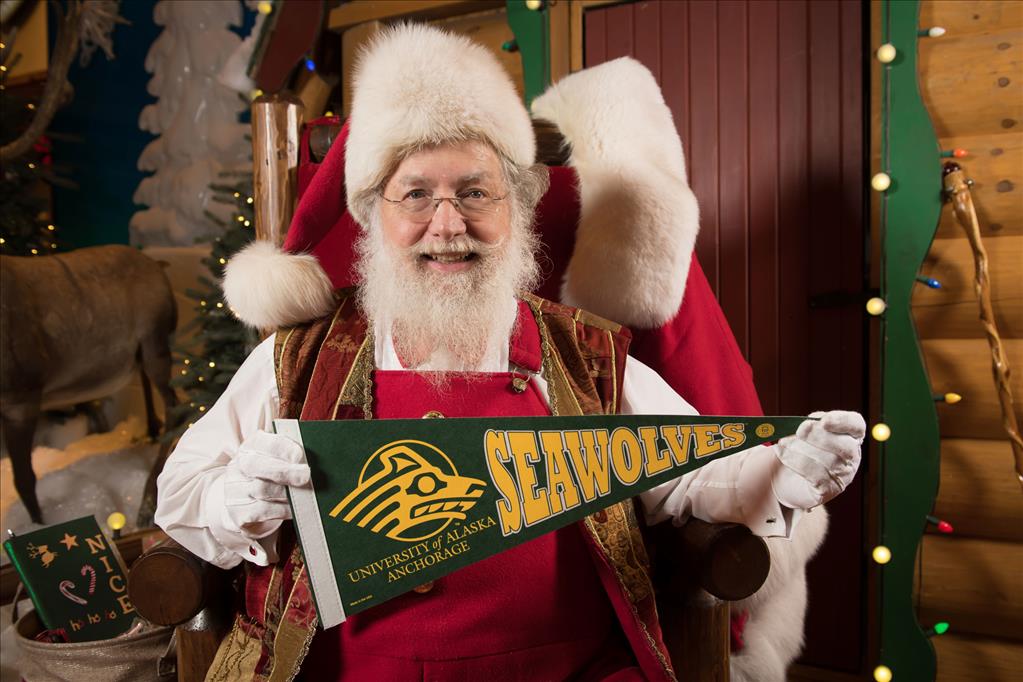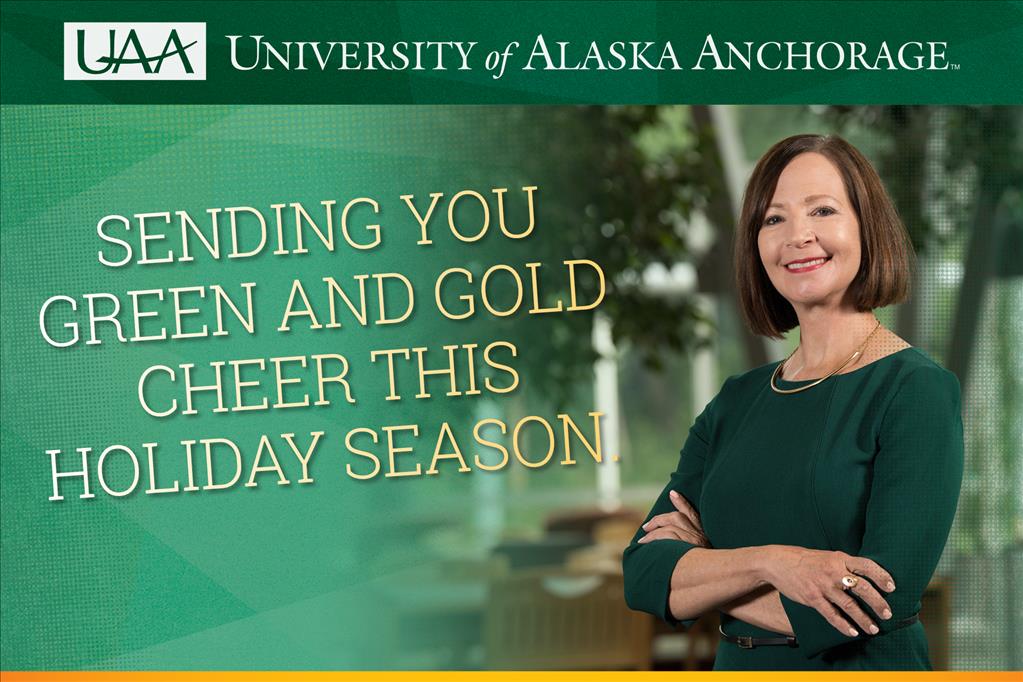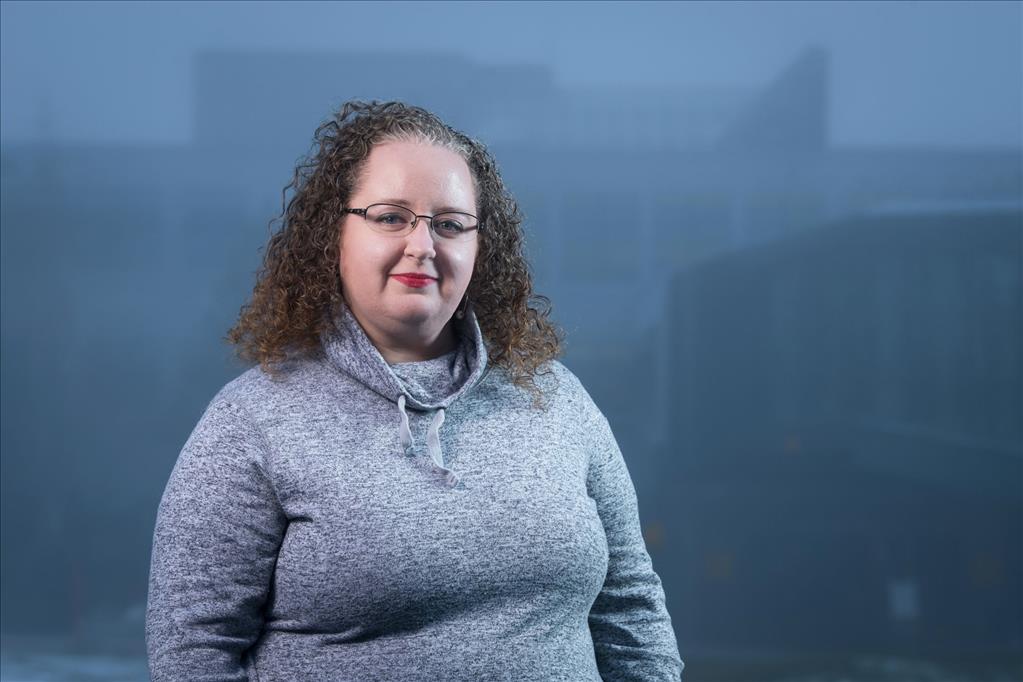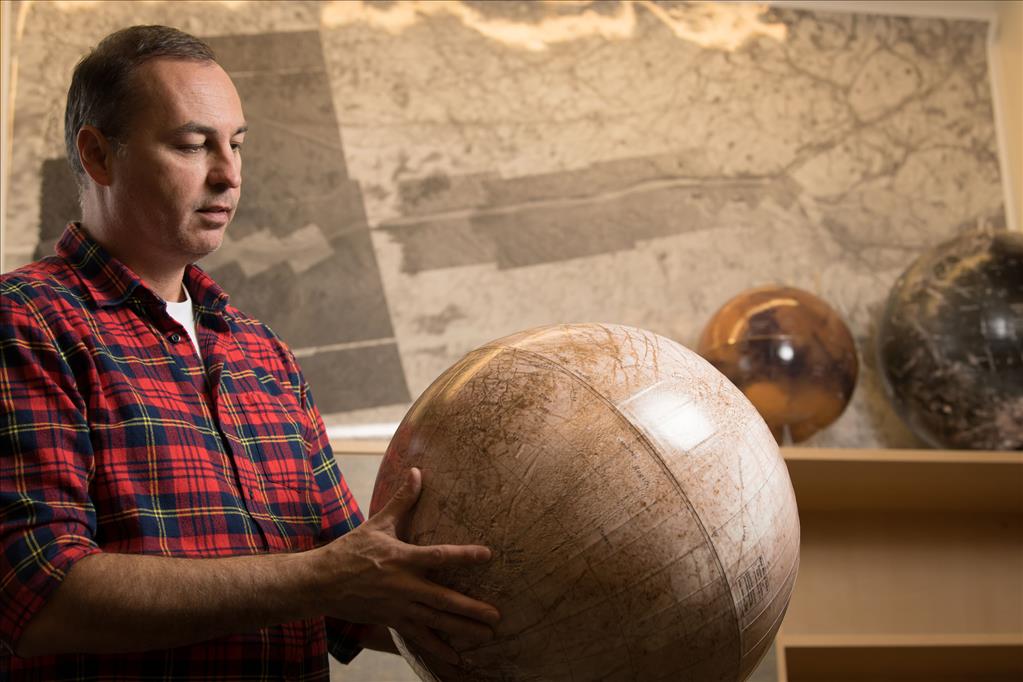Students compete in worldwide 3D imaging and energy exploration competition
by Jess |
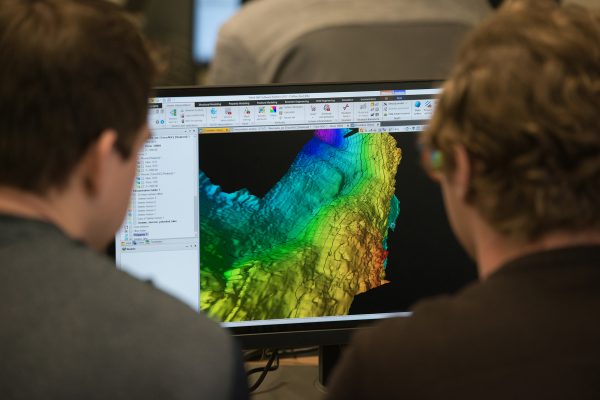
UAA's Imperial Barrel team captain Triffon Tatarin, left, and team member Brock Rust, analyze a subsurface image. Their question: What is the potential for energy exploration? (Photo by James Evans / University of Alaska Anchorage)
Just days from now, on Friday, March 23, five UAA geoscience graduate students will be sweating bullets in their first Imperial Barrel Award competition, run by the prestigious American Association of Petroleum Geologists. At 8 a.m. Friday, the team will present its analysis of a 3D subsurface data set from Australia - via videoconference - to a panel of energy industry experts sitting in Bakersfield, Calif.
While UAF graduate students have competed in the past, this year they won't, and UAA will compete for the very first time. "We are the flag bearers!" said their enthusiastic mentor, UAA geophysicist/petrophysicist Shuvajit Bhattacharya.
UAA is primed for the competition, thanks to more than $100 million in industry software donations over the past year that give students real-world analytical tools. The software tools help them turn all kinds of data sets - seismic, borehole, and other types of geological data - into a colorful image to visualize the subsurface more than 10,000 feet below, noninvasively, and determine what it offers.
These kinds of software tools take powerful computing capacity, available in the new state-of-the-art geosciences computational lab in the Natural Sciences Building. Both a ConocoPhillips donation, and a ConocoPhillips Arctic Science and Engineering Endowment last year, helped outfit the lab's 20 workstations.
And what is an Imperial Barrel Award competition?
The Imperial Barrel Award competition started out in 1976 as part of the petroleum geoscience master's program at Imperial College in the United Kingdom. In 2007 it was adapted so students around the world could compete annually.
The teams have to give rigorous creative and technical evaluations of their site, based on the data set they receive. They must meet a strict deadline, work effectively as a team, make decisions even with incomplete or inadequate data, and present a lucid discussion of the site's drilling prospects. Professionals with decades of experience sit in judgment, offering feedback, and asking questions. Each team is allotted just 25 minutes.
Along the way, the students gain exposure to job recruiters in the audience, and they can even win cash awards for their schools.

Bhattacharya in his office working on a data set from Alaska. (Photo by James Evans / University of Alaska Anchorage)
Bhattacharya knows just how under-the-gun UAA's fledgling team feels; he competed as a graduate student himself; his team came in second. As their mentor, he has set the bar high: "The goal this year is to become - minimum - first," he says with an impish smile.
The five team members are Tony Gallagher, Brock Rust, Seth Nolan, Scott Pantaleone (yes, his dad is UAA physics professor James Pantaleone), and team captain Triffon Tatarin. They received their data set eight weeks ago, and have been busy analyzing it for the key geologic information.
"They are trying to integrate and interpret the data set to image the subsurface," explained Bhattacharya. "First they have to understand the geology in terms of tectonics, sedimentology, stratigraphy and rock properties. Then they have to answer the question, 'Is there any hydrocarbon potential? Can you produce it?' Their third step is to identify the best prospects or sweet spots - where would you drill, and how many wells to drill?"
Bhattacharya says the competition goes beyond demonstrating technical skills, and mirrors performance expectations in the real world.
"Besides technical skills, it's also about the non-technical skills: how effectively you work in a team, how you manage your time to complete the project against the strict deadline," Bhattacharya said. "In industry, when you recommend the managers to drill wells, you don't spend a lot of time explaining the technical aspects in excruciating detail. They want to know why you want to do it, and how much profit to expect. So they have to orient their analysis and recommendation from that aspect."
Tools in place for real-world experience
To compete, UAA's team needed computers with adequate capacity. The new computational lab does the job, not just for the Imperial Barrel contest, but for the full geoscience curriculum.
Likewise, the team needed industry-grade software for subsurface visualization and analysis. Oil and gas companies pay millions of dollars for access to these highly-specialized software products. The high cost often places them out of reach for education institutions. But five companies with geoprediction software stepped up, to the tune of more than $100 million in donated licensing for UAA's use. They include Schlumberger, Ikon Science, Paradigm, CGG, and IHS.
And, with Bhattacharya's industry experience in important sites around the United States, ranging from the Permian Basin in Texas to the Marcellus Shale gas play stretching from Pennsylvania to West Virginia, to the Bakken Shale oil/gas play in North Dakota, he's maintained working relationships with former colleagues and state geological surveys, allowing additional data sets from across the United States to be available for UAA students to work with.
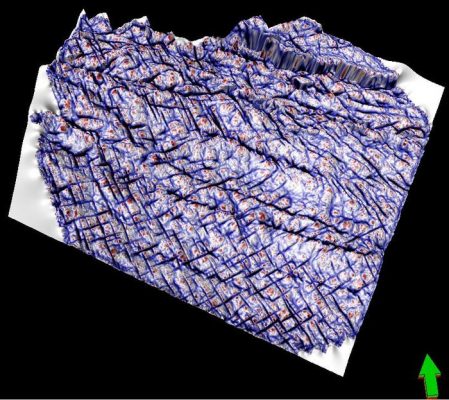
This image illustrates a highly fractured segment of rock about 9,000 feet below the surface of the North Slope. "We are trying to understand how the hydrocarbon can flow through these fractures," Bhattacharya said. (Photo provided by Shuvajit Bhattacharya)
Alaska students will study Alaska geologic information, too. The state's Division of Oil and Gas recently began releasing data sets from the North Slope and Cook Inlet using the state's tax credit program.
All of this exposure to real-world data and specialized software makes the Imperial Barrel Award team, and all UAA's geoscience students, competitive in the post-graduate marketplace.
On your mark...
Scott Pantaleone, with an undergraduate geology degree, is in his first semester of UAA's geoscience master's program. And, he's the "well" guy on the Imperial Barrel Award team, meaning he'll present four minutes of analysis on the three drilled wells included in the team's data set from Australia.
Tuesday, he said he was feeling the pressure to compete well on Friday. For the past two months, ever since they got their data set and started analyzing it, he's added 15-20 hours a week to his academic work load. But he thinks the push is worth it.
"It feels really good, because it seems like what you would do in industry, so it's really good practice for after graduation," he said. "I hope we do well."
Written by Kathleen McCoy for the UAA Office of University Advancement
 "Students compete in worldwide 3D imaging and energy exploration competition" is licensed under a Creative Commons Attribution-NonCommercial 4.0 International License.
"Students compete in worldwide 3D imaging and energy exploration competition" is licensed under a Creative Commons Attribution-NonCommercial 4.0 International License.











